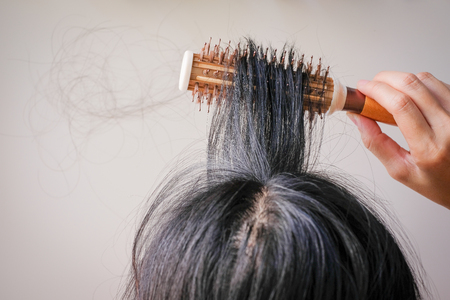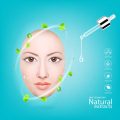Understanding PRP Therapy
Platelet-Rich Plasma (PRP) therapy has become a buzzword in the world of hair restoration, especially across the United States. At its core, PRP therapy involves drawing a small amount of your own blood, processing it to concentrate the platelets, and then injecting this nutrient-rich plasma into areas of thinning hair. The idea is that the growth factors and proteins in the platelets can stimulate hair follicles, encouraging new growth and improving hair density. Over recent years, PRP has gained significant traction as a minimally invasive and relatively natural approach to tackling hair loss, with clinics from New York to Los Angeles reporting a steady increase in demand. As Americans seek out solutions that are both effective and rooted in the latest medical advances, PRP stands out for its promise and popularity—but also for the risks if not performed by trained professionals.
Rising Interest in DIY PRP Kits
The landscape of hair loss treatments is rapidly evolving, and one of the most notable trends is the surge in interest for at-home PRP (Platelet-Rich Plasma) therapy kits. This emerging market has been largely fueled by social media influencers who showcase their personal journeys with DIY beauty and wellness solutions, often making these treatments look easy, accessible, and effective. In parallel, e-commerce platforms are making it easier than ever for consumers to purchase these kits with just a few clicks, bypassing traditional medical channels entirely.
Cost-conscious consumers are particularly drawn to DIY PRP kits as a budget-friendly alternative to professional procedures. The appeal lies in the promise of achieving salon or clinic-like results from the comfort of home—without the hefty price tag associated with in-office treatments. But what exactly is driving this trend? The following table highlights some key factors:
| Factor | DIY PRP Kit Appeal |
|---|---|
| Influencer Endorsement | Creates trust and aspirational value among followers |
| E-Commerce Accessibility | Kits are easily available online with fast shipping options |
| Cost Savings | Significantly lower upfront costs compared to clinical treatments |
| Convenience | No appointments or travel required; can be done on your own schedule |
| Privacy | Allows users to address hair loss discreetly at home |
This convergence of digital marketing, influencer culture, and direct-to-consumer sales has created a perfect storm for the proliferation of DIY PRP kits. However, while the allure is strong, its crucial for consumers to weigh these perceived benefits against potential risks—a topic well explore further in the coming sections.
![]()
3. Risks and Dangers of DIY PRP
While the promise of at-home PRP therapy kits for hair loss might seem appealing, there are significant risks and dangers tied to self-administered platelet-rich plasma treatments. First and foremost, proper PRP therapy requires sterile conditions and professional technique to avoid infection. Without medical-grade sterilization and handling, theres a real danger of introducing harmful bacteria into the scalp, which can lead to serious infections or even abscesses.
Beyond hygiene concerns, the technical skill needed for blood collection, centrifugation, and precise scalp injections is often underestimated. Incorrect preparation or injection can result in poor outcomes—ranging from ineffective results due to insufficient platelet concentration to more severe complications such as tissue damage or nerve injury. Furthermore, DIY procedures often lack proper assessment for candidacy and post-procedure monitoring, increasing the risk of allergic reactions or unexpected side effects going unnoticed.
In short, what might look like a cost-saving shortcut could end up costing far more in terms of health, safety, and long-term hair restoration success. The expertise and protocols followed by medical professionals are there for a reason: to maximize efficacy while minimizing risk. If you’re considering PRP therapy for hair loss, think twice before taking the DIY route—your scalp (and your health) will thank you.
4. Professional PRP: What Sets It Apart
When it comes to Platelet-Rich Plasma (PRP) therapy for hair loss, the difference between a DIY approach and a professional medical treatment is night and day. Opting for PRP at a licensed clinic means you benefit from a combination of advanced technology, expert care, and a controlled environment—factors that simply can’t be replicated at home.
Why Choose Licensed Medical Professionals?
PRP therapy involves drawing your blood, processing it to concentrate the platelets, and then injecting it back into your scalp. This may sound straightforward, but each step requires precision and expertise. Licensed medical professionals have extensive training in sterile techniques, proper injection methods, and patient safety protocols. Their experience helps minimize complications such as infection, scarring, or ineffective results.
The Importance of Proper Equipment
Medical clinics invest in FDA-cleared centrifuges and single-use sterile needles, ensuring that the PRP preparation is both safe and effective. These devices maintain the integrity of your blood sample and guarantee that only high-quality plasma is used in your treatment—something no at-home kit can provide. Here’s a quick comparison:
| Professional Clinic | DIY/At-Home Kit | |
|---|---|---|
| Equipment Quality | FDA-cleared, medical-grade | Consumer-level, limited reliability |
| Sterility | Strictly enforced standards | Difficult to guarantee |
| Staff Expertise | Licensed and trained providers | No formal training required |
| Patient Safety | Monitored and regulated | Unsupervised, higher risk |
| Treatment Results | Consistent and evidence-based | Variable outcomes, more uncertainty |
The Value of a Regulated Environment
Receiving PRP therapy in a regulated clinical setting means you’re protected by state and federal guidelines designed to keep patients safe. Clinics adhere to strict protocols for cleanliness and waste disposal, minimizing the risk of infection or cross-contamination. In contrast, DIY treatments lack oversight, leaving you exposed to unnecessary health risks.
Your Health Deserves Professional Care
Ultimately, while DIY solutions might seem convenient or cost-effective on the surface, they fall short when it comes to safety and efficacy. Entrusting your hair restoration journey to board-certified providers ensures you get the best possible outcome—with your well-being as their top priority.
5. The Regulatory Landscape in the U.S.
When considering PRP therapy for hair loss, it’s crucial to understand how these treatments are regulated in the United States. The Food and Drug Administration (FDA) plays a significant role in overseeing medical procedures and ensuring that products used in therapies like platelet-rich plasma (PRP) meet strict safety and efficacy standards. However, PRP itself occupies a unique regulatory gray area. While the FDA regulates the devices used to prepare PRP, such as centrifuges, it does not directly approve PRP treatments for hair loss since the therapy uses the patient’s own blood and is classified under “minimally manipulated” autologous products.
This regulatory nuance means that there is currently no standardized protocol for PRP preparation or administration across clinics nationwide. Licensed medical professionals are expected to follow best practices, but there’s room for variability that can affect outcomes and safety. For consumers, this matters because an unregulated or poorly executed DIY approach bypasses any oversight, increasing risks of contamination, improper dosing, or ineffective results. In contrast, professional providers operate within state medical boards’ guidelines and are accountable for adhering to established standards of care.
The lack of direct FDA approval for PRP in hair restoration also highlights why professional oversight is vital. Medical practitioners are trained to recognize complications and manage them promptly—something that’s simply not possible with at-home kits or unsupervised procedures. Furthermore, reputable clinics often use FDA-cleared devices and maintain sterile environments to minimize infection risks. Ultimately, trusting your treatment to licensed professionals offers far greater assurance of both safety and efficacy than any DIY solution could provide.
6. Expert Perspectives and Patient Stories
When it comes to PRP therapy for hair loss, the voices of experienced professionals and real patients shed light on why a DIY approach falls short. American dermatologists like Dr. Emily Green of New York’s Skin Science Institute emphasize that “PRP must be performed under sterile, controlled conditions to ensure safety and effectiveness.” She points out that even minor mistakes in preparation or injection technique can result in infection, scarring, or simply wasted effort—risks rarely discussed in online DIY guides.
Dr. Jason Miller, a board-certified dermatologist from Chicago, adds, “We often see patients who try PRP at home with kits bought online. Many come to us later with complications such as persistent scalp irritation or lackluster results. Proper centrifugation of blood and correct dosage are critical—these just aren’t things you can guarantee outside a clinical setting.”
Patient stories echo these warnings. Take Rebecca L., a Los Angeles resident who tried a DIY PRP kit after watching several YouTube tutorials. She recalls, “It seemed straightforward, but my scalp became inflamed, and I didn’t notice any improvement after three months. When I finally went to a dermatologist, they explained how many steps I’d overlooked.” In contrast, Michael R., who opted for professional PRP treatments after his own failed DIY attempt, describes the difference: “The results were night and day. The clinic used advanced equipment and tracked my progress carefully. Not only did my hair start to thicken, but I also felt confident knowing everything was done safely.”
These expert insights and personal accounts highlight a common theme: while DIY solutions may sound appealing for their convenience and cost savings, they carry significant risks that can outweigh any potential benefits. Professional oversight ensures both the safety and effectiveness of PRP therapy—a crucial consideration for anyone serious about addressing hair loss.
7. Choosing a Safe Path Forward
As PRP therapy for hair loss gains traction across the United States, it’s tempting to seek out cheaper, do-it-yourself alternatives. However, the risks associated with DIY PRP treatments—ranging from infection to poor results—far outweigh any perceived benefits. Americans considering PRP should prioritize their health and safety by opting for professional care. Licensed medical providers not only adhere to strict protocols and hygiene standards, but also have the expertise to tailor treatments based on individual needs and underlying conditions.
Why Professional Treatment Matters
Professional clinics use FDA-cleared equipment, properly handle blood products, and follow state-regulated procedures to ensure both safety and efficacy. They also offer thorough consultations, realistic expectations, and post-procedure support, which are critical for optimal outcomes. By choosing a certified provider, patients minimize complications and maximize their chances of successful hair restoration.
Tips for Finding a Reputable PRP Clinic
- Check Credentials: Look for board-certified dermatologists or physicians with specific training in PRP therapy.
- Ask About Experience: Inquire about the number of procedures performed and request before-and-after photos.
- Review Safety Protocols: Ensure the clinic follows proper sterilization practices and uses FDA-approved devices.
- Read Reviews: Browse patient testimonials on trusted platforms like Google or RealSelf.
- Consultation Matters: A reputable clinic will offer a comprehensive consultation and address your questions without pressuring you into immediate treatment.
The Bottom Line
If you’re considering PRP therapy for hair loss, resist the allure of DIY solutions. Invest in your well-being by partnering with professionals who can deliver safe, evidence-based results—because when it comes to your health, shortcuts aren’t worth the risk.


